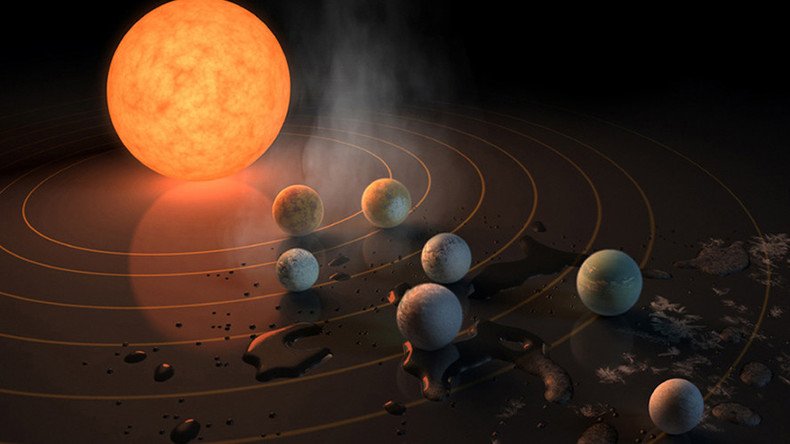‘Unlocking their secrets’: NASA to search for life on TRAPPIST-1 exoplanets

Seven recently-revealed exoplanets found orbiting a star 39 light-years from Earth will be searched for signs of life using NASA’s soon-to-be launched space telescope, according to the space agency.
Last last month, NASA revealed that three of the seven planets lie inside the ‘habitable zone’ of their star, TRAPPIST-1.
NASA plans to “probe” the seven worlds with the James Webb Space Telescope, scheduled to launch in October 2018, which they hope will “help us find out if any of these planets could possibly support life.”
READ MORE: #7NamesFor7NewPlanets: NASA looks for help naming new discoveries, internet obliges
“If these planets have atmospheres, the James Webb Space Telescope will be the key to unlocking their secrets,” said Doug Hudgins, Exoplanet Program Scientist at NASA Headquarters in Washington.
How the future @NASAWebb will study 7 Earth-size planets’ atmospheres for ozone & other signs of life #TRAPPIST1https://t.co/8JtjzClTgapic.twitter.com/HbZYXUkovS
— NASA Planetquest (@PlanetQuest) March 2, 2017
Until the space telescope is ready to launch, NASA are relying on their space exploration missions already in orbit, like Spitzer, Hubble, and Kepler, to keep an eye on TRAPPIST-1.
Scientists are hoping the telescope will be able to shed some light on the Earth-like planets that astronomers have been looking for “for thousands of years,” according to astrophysicist and planetary scientist Sara Seager.
In case you missed it: all the #TRAPPIST1 planets compared to our solar system, plus multimedia is here:https://t.co/dUN4rZuROcpic.twitter.com/hh07rnsioO
— NASA Spitzer (@NASAspitzer) March 4, 2017
During its mission, Webb will deliver much-needed information about these planets, including if their atmospheres have water, methane, carbon monoxide/dioxide, and/or oxygen, and whether they could have liquid water. The Webb data presents a significant contribution towards the end goal of discovering if the planets can support life.
READ MORE: NASA offers stunning 360-degree ‘tours’ of newly-discovered exoplanet (VIDEO)
The Webb telescope, a joint project from NASA, ESA, and the Canadian Space Agency, is the “scientific successor” to NASA’s successful Hubble telescope and the “most powerful space telescope ever built,” according to NASA.












